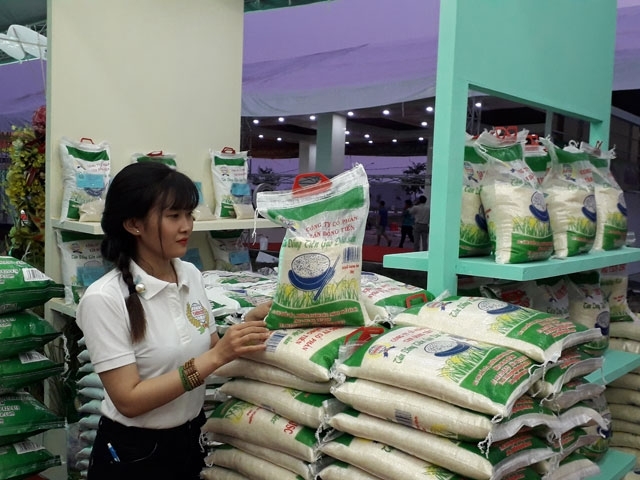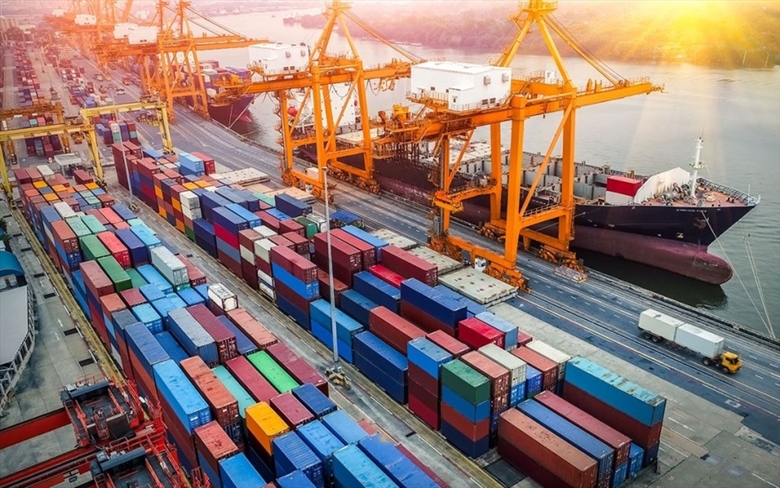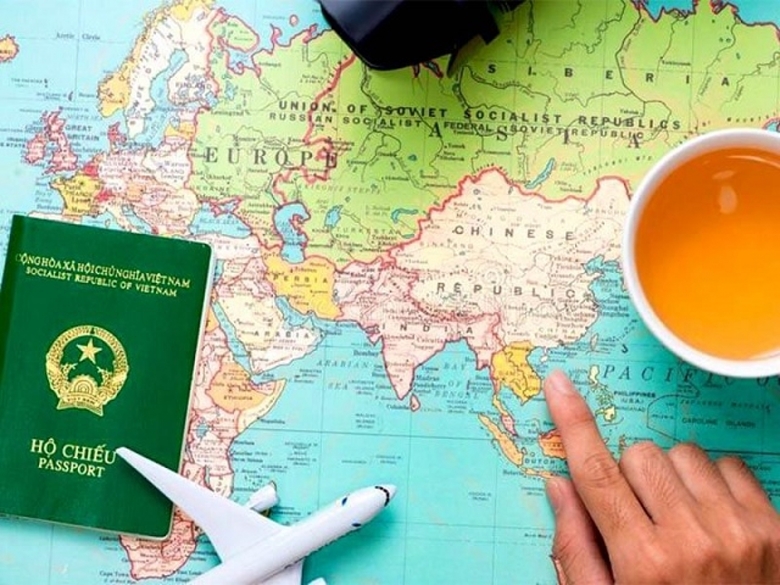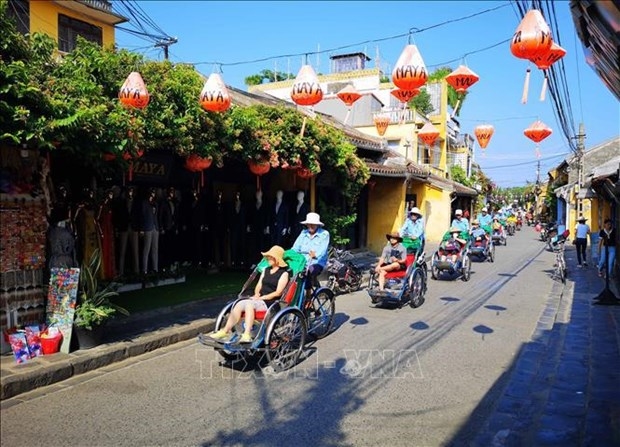 |
|
Photo for illustration (Source: NDO)
|
According to the Vietnam Food Association (VFA), the export price of Vietnam’s 5% broken rice is higher than that of Thailand, India and Pakistan.
Specifically, each tonne of this kind of rice is sold for 418 USD, 8 USD higher than that of Thailand, and 30 USD and 75 USD higher than those of Pakistan and India, respectively, said the Vietnam News Agency.
Meanwhile, the export price of Vietnam’s 25% broken rice is currently 403 USD per tonne, equal to that of Thailand, but 35 USD and 75 USD higher than those of Pakistan and India, respectively.
In addition, the country’s high-quality rice is being shipped to Japan and Europe. Recently, Tan Long Group JSC, in collaboration with Japan’s Kiraboshi Bank, held a ceremony in Tokyo to introduce ST25 rice, which was named the world’s best rice in 2019, to the Japanese market. Meanwhile, Loc Troi Group JSC exported nearly 500 tonnes of high-quality rice labelled with its own brand name “Com Vietnam Rice” to the EU markets in June.
IMF forecasts Vietnam’s GDP growth at 7.2% in 2023
The International Monetary Fund (IMF) has predicted that with the country’s ongoing strong economic recovery, the Vietnamese economy is likely to reach real GDP growth rates of 6% this year before rising to 7.2% in 2023.
 |
|
Photo for illustration (Source: baodautu.vn)
|
This projection was made in a press release on July 5 following the recent annual consultation between the IMF Executive Board and the Vietnamese Government.
According to the Voice of Vietnam, Directors of the IMF’s Executive Board commended Vietnamese authorities for adopting policies to cushion the impact of the pandemic, successfully maintaining fiscal, external, and financial stability, and successfully deploying its impressive vaccination rollouts.
They pointed out that a recovery is currently underway in Vietnam and high frequency indicators point to stronger momentum for the year ahead, with rising retail sales, industrial production, and firm entry.
Moving forward, Vietnam’s GDP growth rate is expected to reach 6% this year as activity normalisation continues and the Program for Recovery and Development (PRD) is implemented, according to the IMF.
However, the recovery of the labour market is lagging due to high underemployment. Although inflation has recently picked up due to rising commodity prices coupled with supply-chain disruptions, it remains well below the central bank’s inflation ceiling, largely due to economic slack and relatively stable food and administered prices, commented IMF experts.
In addition, they said, while a strong economic recovery is underway, it currently remains uneven, causing a lag in the labour market, rising financial sector vulnerabilities, and longstanding structural challenges. Noting some of the risks are to these challenges, they called for agile policymaking, proactively adjusted to the pace of the recovery, and evolution of risks.
IMF experts also underscored the need for fiscal policy to take the lead and be flexibly adjusted to be in line with evolving economic conditions. They welcomed the PRD and emphasised the importance of targeting, spending efficiency, and steadfast implementation. As a result, they encouraged a gradual fiscal adjustment when the recovery becomes more entrenched, with a primary focus on revenue mobilisation to create space for spending on social, climate, and other development objectives.
The necessity for monetary policy to be nimble and vigilant in terms of inflationary risks was also stressed by directors, with a specific focus on the importance of addressing loan problems, normalising regulatory forbearance in a timely fashion, and closely monitoring risks in the real estate sector. They noted that over the medium term, bank capital positions must be strengthened and macroprudential regulations and private debt restructuring frameworks enhanced.
 |
|
Photo for illustration (Source: VGP)
|
The directors remarked on the country’s external position being stronger than warranted by fundamentals and desirable policies. In this regard, they called for continued efforts to boost domestic private investment and enhance social safety nets, welcoming recent steps towards achieving greater exchange rate flexibility and monetary policy modernisation and encouraging continued efforts to move in this direction.
The consultation saw participants conclude by underscoring the importance of structural reforms which seek to improve the local business environment, enhance productivity, and boost potential growth. They concurred that priority should be given to reducing labour skill-mismatches, promoting digital transformation, and ensuring a level playing field, particularly for SMEs.
The directors also praised the country’s ambitious environmental agenda and urged the translation of targets into concrete policy actions. They welcomed continued efforts to improve economic institutions and strengthen governance, including the Anti-Money Laundering and Combating the Financing of Terrorism (AML-CFT) framework, while outlining the importance of strengthening data frameworks.
Vietnamese passport leaps four places in Henley Passport Index
The Vietnamese passport has climbed four notches to rank 90th on a list of the world’s most powerful passports, according to the latest report compiled by Henley Passport Index.
The rankings were announced in the second quarter of this year and includes 199 different passports and 227 different travel destinations, with its assessment based on the number of countries a holder can visit without first needing to obtain a visa.
 |
| Photo: VOV |
The latest index indicates that people with a Vietnamese passport enjoy free access to 54 countries and territories globally. Along with the nation, Togo, Mali, and Guinea also hold joint 90th position as their passports also have visa free access to 54 destinations, said the Voice of Vietnam.
Elsewhere, Japan and Singapore share first position as the most powerful passport in the world in the second quarter of this year, with their citizens able to visit 192 countries and territories without the need to apply for a visa.
Furthermore, Germany and the Republic of Korea come in second with visa exemptions to 190 countries, followed by Finland, Italy, Luxembourg, and Spain who are all tied in third position, with holders of those passports having visa free access to 189 destinations worldwide.
In contrast, the world’s weakest passports include those from the likes of Pakistan, Syria, Iraq, and Afghanistan. Indeed, passport holders from these nations are only able to visit between 26 and 31 other countries without visas.
International searches for Vietnamese tourism up 1,125% in June
The number of international search volume for Vietnam’s tourism in June surged by 1,125% year-on-year, according to the Vietnam National Administration of Tourism (VNAT).
According to the Voice of Vietnam, large volumes of search for Vietnamese tourism information are seen in the US, Singapore, Australia, India, Japan, France, Thailand, Germany, Canada and the UK.
 |
|
International tourists visit Hoi An (Photo: VNA)
|
Meanwhile, the country’s most searched destinations were Ho Chi Minh City, Hanoi, Phu Quoc island in Kien Giang province, Da Nang, Nha Trang city in Khanh Hoa province, Hoi An ancient city in Quang Nam province, and Da Lat city in Lam Dong province.
After three months of the post-pandemic full reopening, some destinations reporting a year-on-year increase of over 75% in terms of the number of tourist arrivals include Ha Long city in Quang Ninh province, Sam Son beach in Thanh Hoa province, Dong Hoi city in Quang Binh province, Nghe An’s Cua Lo beach, Hai Phong and Ninh Binh./.